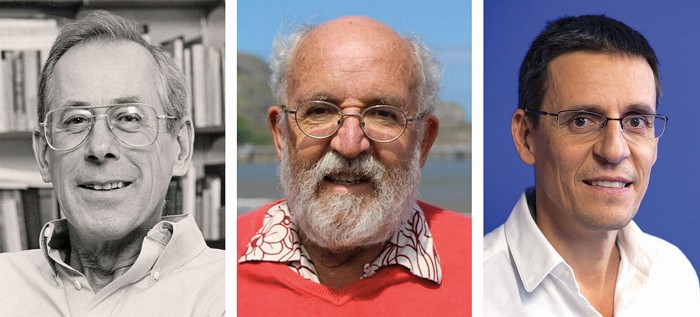Advertisement
Grab your lab coat. Let's get started
Welcome!
Welcome!
Create an account below to get 6 C&EN articles per month, receive newsletters and more - all free.
It seems this is your first time logging in online. Please enter the following information to continue.
As an ACS member you automatically get access to this site. All we need is few more details to create your reading experience.
Not you? Sign in with a different account.
Not you? Sign in with a different account.
ERROR 1
ERROR 1
ERROR 2
ERROR 2
ERROR 2
ERROR 2
ERROR 2
Password and Confirm password must match.
If you have an ACS member number, please enter it here so we can link this account to your membership. (optional)
ERROR 2
ACS values your privacy. By submitting your information, you are gaining access to C&EN and subscribing to our weekly newsletter. We use the information you provide to make your reading experience better, and we will never sell your data to third party members.
Nobel Prize
Theoretical understanding of universe evolution and discovery of exoplanets win 2019 Nobel Prize in Physics
James Peebles wins for advances in physical cosmology, Michel Mayor and Didier Queloz win for exoplanet discovery
by Sam Lemonick
October 8, 2019

The 2019 Nobel Prize in Physics has been awarded to three researchers for discoveries about our universe, including matter that is nearly invisible and planets circling distant stars.
Half of the roughly $1 million prize will go to James Peebles of Princeton University, and the other half jointly to Michel Mayor of the University of Geneva and Didier Queloz of the University of Geneva and the Cavendish Laboratory at the University of Cambridge.
This year's prize recognizes "contributions to our understanding of the evolution of the universe and Earth's place in the cosmos," according to the Royal Swedish Academy of Sciences, which selects the winners. Paolo de Bernardis, an astrophysicist at the Sapienza University of Rome, says the prize committee "found a way to unify very distant discoveries."
Peebles is a pioneer of physical cosmology, the field that studies the make-up and evolution of the universe through its large-scale structures. For example, he helped predict the existence of cosmic microwave background radiation left over from the universe's intensely hot beginning. Precise measurements of cosmic microwave background radiation have helped confirm the Big Bang theory of how our universe formed.
Peebles also contributed to predictions about dark matter, which is thought to make up about 85% of the matter in the universe. Astronomers had observed behavior, including gravitational effects, that couldn't be explained by matter they could observe. Peebles and other physicists posited that cold dark matter, slow-moving matter that doesn't interact with visible light or other electromagnetic radiation, is responsible.
De Bernardis says Peebles was among the scientists who pioneered the idea of studying the universe using the laws of physics, not just observations. Thanks to him and others, de Bernardis says, "we passed from an astronomical view to a physical view" of the universe.

Chanda Prescod-Weinstein, a physicist at the University of New Hampshire, praised Peebles for a long and distinguished career, but lamented that the Nobel Prize committee failed to recognize another dark matter pioneer, Vera Rubin, before she died in 2016. The Nobel Prize goes to only living researchers. "The bar for women to receive the prize in cosmology and particle physics seems almost infinitely higher than it is for men," Prescod-Weinstein says.

Mayor and Queloz were the first to find a planet circling a sun-like star outside our solar system. Today, astronomers have found more than 4,000 exoplanets. Through careful observations of light from a star 50 light-years away, Mayor and Queloz noticed it was moving back and forth ever so slightly. They concluded that a Jupiter-sized planet, which was eventually named 51 Pegasi b, orbiting the star was tugging on it. Called Doppler spectroscopy, the technique the pair used relies on changes in the color of a star's light as the star moves towards Earth and away from it due to the gravitational effects of its orbiting planet. Hundreds of exoplanets have been found since using this method, in addition to the thousands found using other techniques.
The pair's work was a landmark discovery, says Ewine van Dishoeck, an astronomer at Leiden Observatory. Mayor and Queloz "opened up an entirely new field in astronomy, and it is now one of the fastest growing," she says. "It is exciting to think that within the coming decade, we may even start to search for signs of life in the atmospheres of those exoplanets."
CORRECTION
This story was updated on Oct. 10, 2019, to correct Didier Queloz's affiliation. He works at the Cavendish Laboratory, not the Cavendish Observatory.





Join the conversation
Contact the reporter
Submit a Letter to the Editor for publication
Engage with us on Twitter